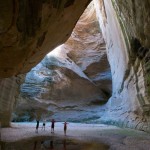What Do Our Guides Do for Their Vacations? Part 3: Canyoneering in Arizona
May 19, 2013
Part 3: Canyoneering in Arizona
After repacking our gear into our respective vehicles, Sue returned to her home in L.A. Kelly went to meet a friend, Lori, with whom he had a date to attend a dance south of Flagstaff, and they planned to meet us in Flag the following morning.
Mike caravanned with the rest of us to Flag and spent the night with us, before heading on to his home in Albuquerque. In Flag, we spent a night on the “garage-converted-to-all-purpose-room floor of some friends, and in the morning, after a scrumptious bagel breakfast provided by our hosts, we caravanned south of Flag to the Mogollon Rim area. There the flat-lying sedimentary rocks of the Grand Canyon and Colorado Plateau are down-faulted on the south, and there are many canyons to explore. We spent the remainder of the afternoon hiking down into one of them, walking upstream, then back downstream, then back up to the canyon rim.
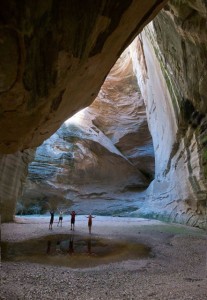
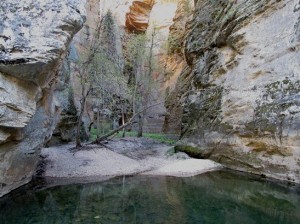
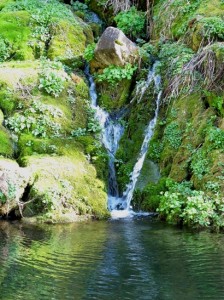
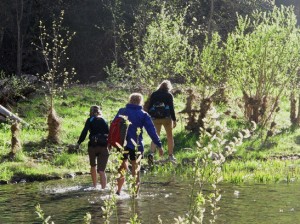
Not only do trout live in the river, but also crayfish one of which Ron caught.
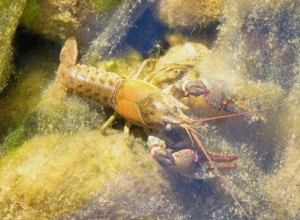
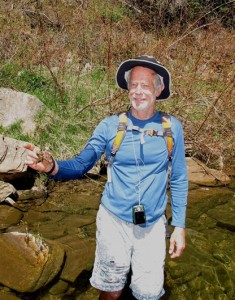
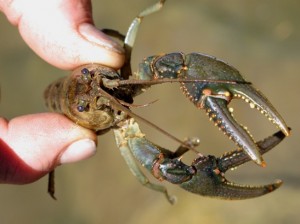
There on the canyon rim, which is eroded out of the Coconino Sandstone, Ron, Ira, Kelly, Lori and I camped while Joanne, Chandra, and Jen left for their respective homes. With their departure, the social-energy level seemed to drop dramatically, and the five of us had a quiet, low-key campfire.
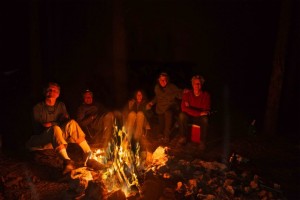
The following day, Ron, Ira, Kelly and I hiked back down into the same canyon but hiked downstream this time and found some lovely spots for pictures and lots of wading as we had to cross back and forth many times which is typical of Southwest canyons.
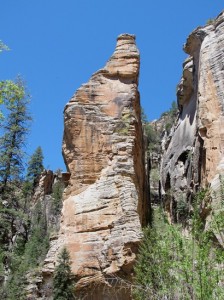
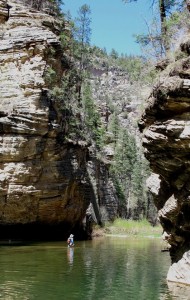
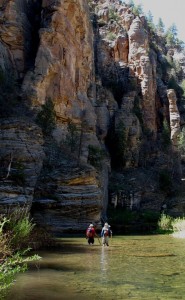
We spent that night at the same campsite as the previous one, and the next morning we headed off to a different canyon which has a well-used hiking trail into it. All five of us hiked down into the canyon bottom where there are a series of springs which yield a LOT of water, some spectacular waterfalls, and much more subtle riparian beauty against the backdrop of the arid canyon walls.
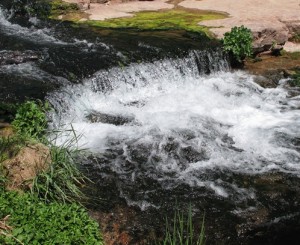
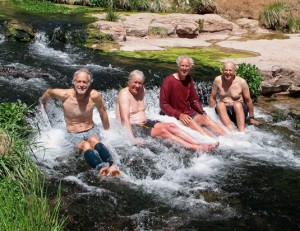
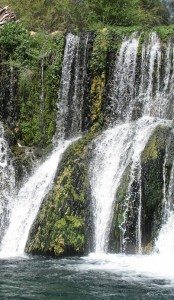

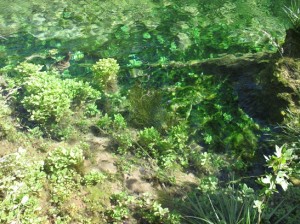
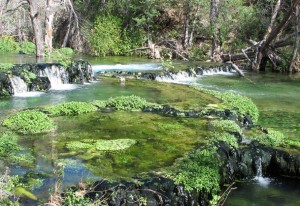
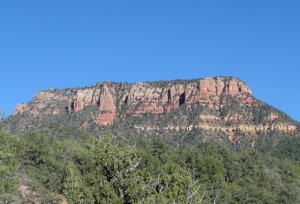
I was pleased to have spent most of the day hiking and talking with Kelly about some of the personal growth work that we’ve each done since we last spent quality time together. Much of mine has been with my involvement with the Mankind Project in Hawaii.
The following day, all five of us hiked down a trail to where it crosses the upper portion of a drainage that has eroded a deep slot canyon into the Coconino Sandstone. This upper part of the drainage has a series of barriers of fallen rocks, downed trees, and miscellaneous obstacles which made for slow, uncomfortable going.
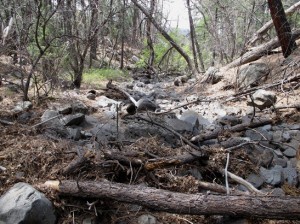
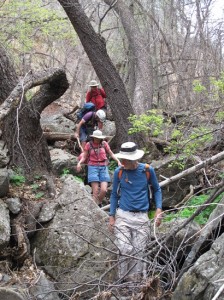
We were starting to have our doubts about our correct location when we reached the first rappel. Ron set it up and Kelly rappelled down first, followed by Ira, then me, then Lori, then Ron.
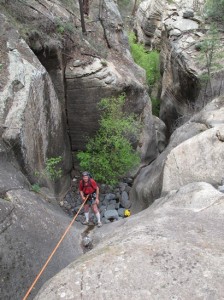
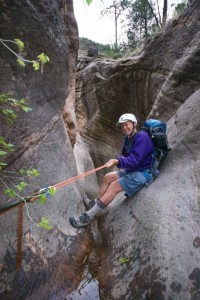
We mostly kept that order of descent since Kelly and Ron were the most experienced at this kind of canyoneering, and Ira wanted to go second, so he could take the pictures he wanted. I was the calm, reassuring presence below Lori that she so appreciated. Ron’s expertise dictated that he go last.
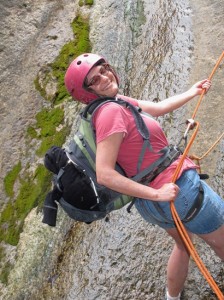
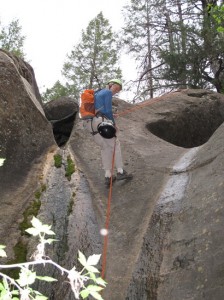
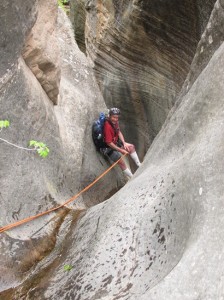
Lori had absolutely no experience doing these kinds of activities, and despite having recovered from 10 years of life with only wheel chair mobility, she was a real trooper. Though fearful at times, she overcame those primordial fears (“The more you lean back, the more stable you’ll be!”), and embraced the unknown below her with courage and grace.
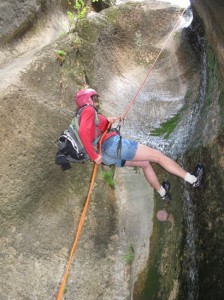

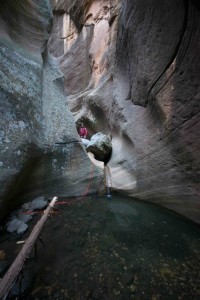
There were 6 rappels in the slot canyon, some into shallow pools, and by the time we emerged into the main canyon, it was fairly late in the day.

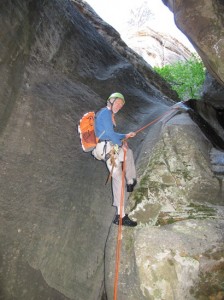
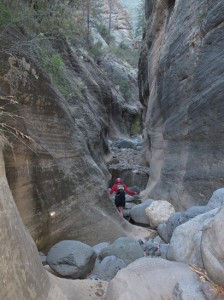
Our next task was to find the trail that led back to the rim and our vehicles. Ron found the trail upward almost immediately, and while it was light enough to see easily when we started up, it was fully dark, except for the light of the full moon on the upper portions of the trail, when we finally arrived at our vehicles where we made camp. The following morning, we tried to find another technical canyon nearby that suited our available equipment and our abilities, but to no avail. In the end, we discovered that although we four guys had spent many years exploring Southwest canyons, not one of us had been to Walnut Canyon Nat’l Monument, so we headed there.
Walnut Canyon is a site that was occupied by the Sinagua (“without water”) people, descendants of the Anasazi, who built cliff dwellings there between 1125 and 1250 A.D. Tradition tells that some of them became the ancestors of the Hopi people. The Sinagua people dry-farmed on the canyon rim and built cliff dwellings in the alcoves that were created by the erosion of less-resistant rock layers below.
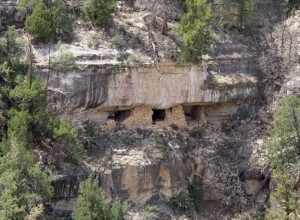
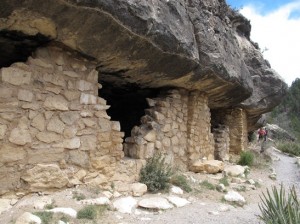
We spent that night with our Flagstaff friends before heading toward our respective homes the following morning.

